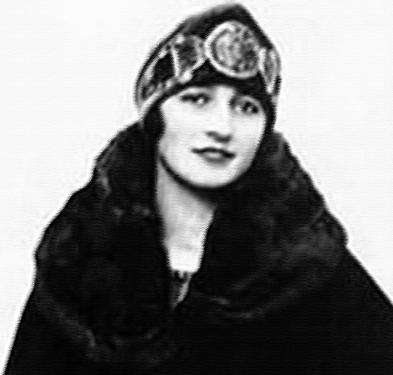The
Macorina (María Calvo Nodarse) (Guanajay, 1892 - Havana, 15th June 1977) was
the first female driver in Havana, the first woman who obtained the driver
license at the beginning of 20th century.
Her
audacity and beauty allowed her to enter the most selected circles of the Cuban
society at that time; she had an attractive personality and beautiful eyes that
helped her become one of the most elegant and famous prostitutes of the time.
She was neither a prostitute in the indiscriminate meaning associated with this
profession, nor worked in a brothel, but she prostituted herself selectively.
And she began her quick career to wealth, as she said in an interview by
Guillermo Villarronda for the magazine Bohemia on 26th October 1958: “More
than a dozen men remained surrendered to my feet, flooded of money,

pleading
for love”. She was a friend of rich Havanese men dedicated to politics and
business, among whom José Miguel Gómez (popularly known as “Tiburón”
[Shark]), whom she helped with her loyalty during the successes of “La
Chambelona”.
Regarding
the origin of his nickname “Macorina”, it is said that once, while Maria was
walking down the sidewalk of the Louvre, a young man who had drunk more than
necessary told the woman: “There goes the Macorina!” when he really meant
the Fornarina (whose true name was Consuelo Bello), a famous Spanish cabaret
singer, contemporary of the Spanish Raquel Meller and the Cuban “Chelito”.
He wanted to compare her to the Fornarina but his drunkenness made
him say “Macorina”.
After
having accumulated wealth and being part of the most selective social circles of
Havana, the national economic situation was no monger so prosperous, but perhaps
the incontrovertible fact was that the Macorina was then 42 years old. The past
friends were invoking excuses every time she asked them for help, and thus she
had to sell all her belongings, from jewelry to houses and cars: Macorina ended
in the most absolute poverty, living in a room she rented in a familiar house in
Havana. Macorina began to lose popularity and youth inexorably, she had to sell
her nine cars, four mansions, dresses, jewelry, furs, everything and died almost
in misery. Qualified by someone as the Mata Hari Cuban, it is known that
Macorina, besides being the first woman who obtained a driving license and drove
a car, she made a dissolute life, which in her elderly years she regretted. She
died in Havana.
Macorina was so popular that not only she has two musical compositions in her honor and a painting by Cundo Bermúdez, but was immortalized by the famous Bejucal charanga (traditional ensembles of Cuban dance music), celebrated in December, and where in the parades of characters a big doll with a mask appeared under which there was its creator, a mason named Lorenzo Romero Miñoso. About her the Asturian Alfonso Camin wrote his famous poem “Macorina” (included in his book “Carey”) that the Costa Rican singer Chavela Vargas (naturalized Mexican) transformed into one of the most popular songs of her career.